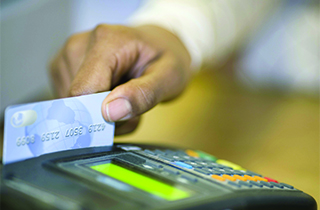Card Safeguards

Tens of millions of shoppers felt their stomachs lurch last fall when the news broke of the security breach involving credit and debit cards used at Target stores. Knowing there are always potential risks, what are some ways—short of not using the cards at all—for consumers to protect their cards and their accounts from trouble?
One thing to keep in mind is that consumer protection laws don’t treat credit and debit cards the same way. Generally, federal law limits your personal liability for fraudulent charges on a credit card to $50. But the liability for fraudulent transactions on a debit card could be much higher—possibly $500 or more, depending on how quickly you report the breach.
If there is fraudulent activity, it can take longer for funds to be restored to a debit card. While debit cards have certain advantages (no debts), for fraud prevention purposes credit cards are generally considered safer.
SECURITY HABITS
Ask the experts
When using your plastic card outdoors—such as at an ATM or a gas station—look carefully at the machine for any extra or unusual parts a thief might have installed to try to capture card information. Cover your hand when typing in the personal information number (PIN). Select your PIN number carefully—don’t use a number that’s easy to guess, such as your birthday or part of your phone number or address.
When making purchases online, look for signs of security measures in place, such as a padlock symbol in the Web browser window, and a Web site whose address begins with “https:/.”
If you have a dual purpose card that can be processed as either a debit card (taking money immediately out of your bank account) or as a credit card (adding the charge on your monthly statement) use caution. Ask your bank, credit union, or other card issuer exactly how each kind of transaction is handled and what the rules are about fraud. Then decide which method will give you the most protection against thieves—and only use your card that way.
PROTECT YOURSELF
What’s in your wallet?
The best way to stay ahead of the crooks is to regularly check that all transactions for your debit card or credit card are ones you made yourself. Your card issuer may also allow you to set up alerts for transactions over a certain amount, or from certain places or kinds of retailers.
Security experts also recommend making photocopies of everything in your wallet—the front and back of every card. If your wallet is lost or stolen, having that information—including the phone number to call to report the missing card—can be a money saver.

